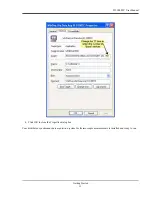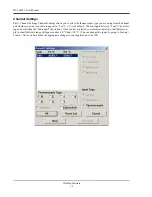
DI–1000TC User Manual
Introduction
1
1. Introduction
Congratulations on your purchase of a DI-1000TC data acquisition instrument for Thermocouple measurements.
This manual is written with the assumption that you have a general understanding of data acquisition, digital I/O and
DSP operations, and that you possess enough proficiency in software to write your own application and/or diagnostic
programs.
Features
The DI-1000TC provides the following features:
•
Expandable: Up to 8 DI-1000TC units (64 channels max) may be daisy-chained together to form one distributed
synchronous data acquisition system.
•
Built-in RS-422 Interface: This allows DI-1000TC units to connect to any host PC through an inexpensive
adapter via an RS-232 or USB port. This RS-422 interface also serves as an expansion port for other DI-1000
Series instruments.
•
Isolation: The DI-1000TC's 1000VDC and Peak AC input-to-output and channel-to-channel isolation allows
grounded TC measurements.
•
High Accuracy and Resolution Design: Allows sharpened decisions with an overall accuracy of ±0.2% of span,
and temperature resolution as fine as 0.08°C.
•
Portable: The DI-1000TC is provided in a small (13.81D × 10.48W × 3.81H centimeters; 5-7/16D × 4-1/8W × 1-
1/2H inches) enclosure consisting of an aluminum base and all-steel wraparound.
The following provides a brief overview of the major subsystems of the DI-1000TC Series.
Thermocouple Inputs
Depending on the model of DI-1000TC you purchased, you will have either 4 or 8 thermocouple inputs. Each input
channel may be configured in software to support one of seven thermocouple types: J, K, T, E, S, B, or R. Tempera-
ture measurements may range from -200°C to +1820°C (-328°F to +3308°F), depending upon thermocouple type.
Each DI-1000TC thermocouple channel features a panel-mounted, miniature spade connector, and all input channels
are electrically isolated from ground and each other up to 1000VDC, or peak AC.








































